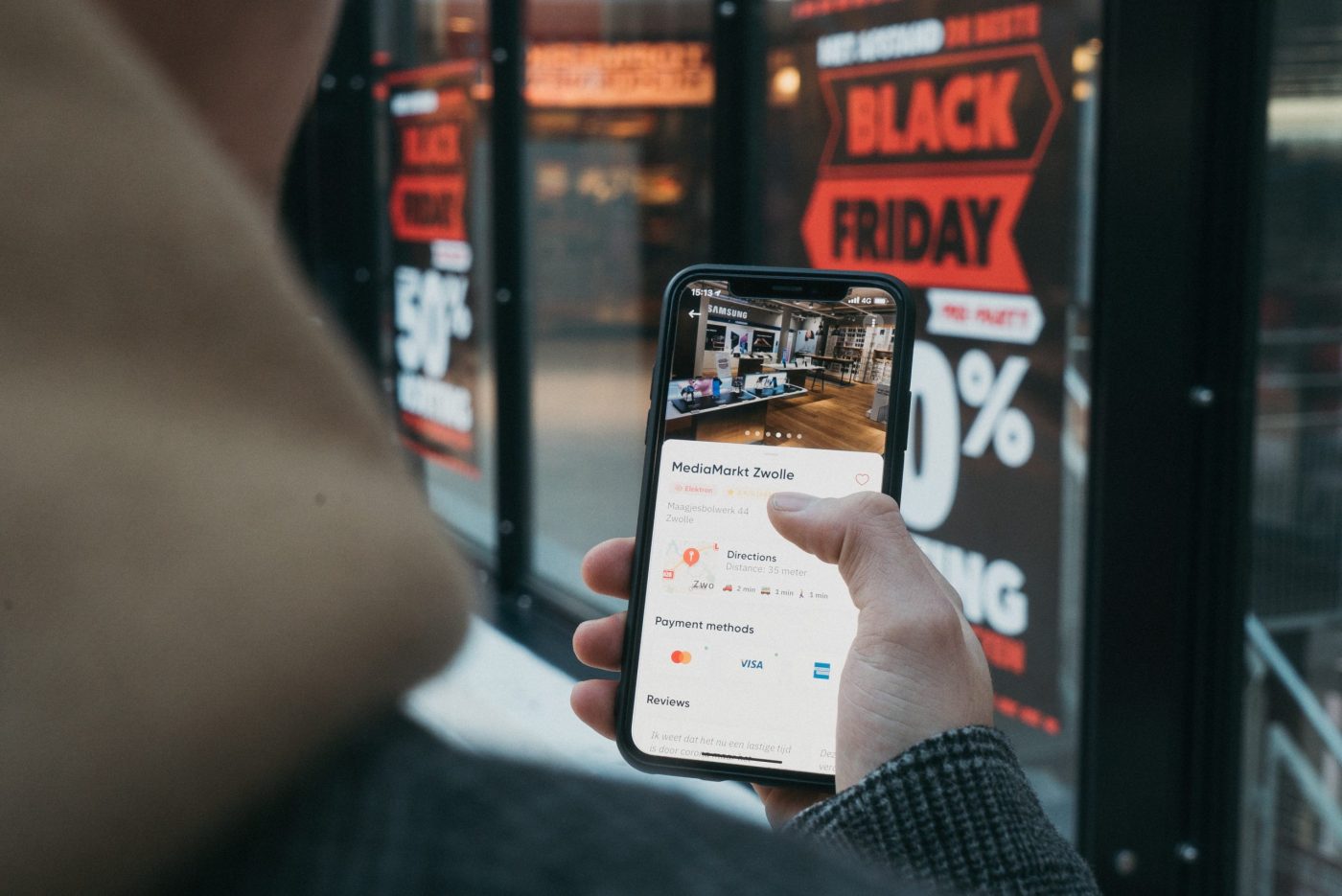The lowdown on contextual commerce
Remember when the Washington Post received backlash for embedding ‘buy’ buttons in articles that mentioned certain products shortly after the newspaper was acquired by Amazon? That’s an example of contextual commerce, albeit an ill-conceived one.
If you’ve ever ordered groceries via Google Assistant or paid for a Starbucks latte using the mobile app, you’ve engaged with contextual commerce: the art of meeting customers in their natural online habitat and offering a convenient point-of-sale devoid of the pain points of a traditional retail structure.
By eliminating the details of the transaction and prompting a seamless mobile payment, contextual commerce enables customers to interact with your brand while doing something else. Implementing buying opportunities into everyday activities lowers barriers to purchase while personalizing the customer experience.
People can book restaurant reservations on their smartwatch while out for a run or buy clothing items while browsing social media. Given the immediacy of the interaction, customers are far less likely to rethink their purchases or abandon their digital cart.
With the rise of IoT devices — experts estimate 35 million devices will be installed worldwide by 2021– customers can make purchases through non-transactional interfaces using their voice or in a few taps.
The technology behind contextual commerce: an omnichannel customer experience
The earliest iterations of contextual commerce were retailer’s blogs, which were lookbooks containing links to product pages. Today, contextual shopping is more high-tech, spanning virtually all customer contact channels and devices — otherwise known as omnichannel CX.
Internet of Things
Wearable devices, smart speakers, and smart home appliances generate troves of data that empower businesses to provide customers with personalized recommendations. For example, geolocation services in internet-connected car dashboards recommend location-specific restaurants and attractions based on GPS coordinates. Passengers can also pay for parking, gas, and food with built-in payment technology.
Meanwhile, some smart refrigerators can order groceries directly from a built-in display — or you can “contact” your refrigerator remotely while at the store to “ask” what supplies need replenishing. In both examples, an electronic device becomes a convenient point-of-sale that encourages customers to buy things while going about their business.
Voice assistants
Adoption of smart speakers continues to climb, with 24% of US adults now owning one, but voice commerce is still concentrated on low-stakes purchases like groceries, consumer packaged goods, and restaurant takeout. General-purpose retailers including Walmart, Target, and Kroger offer voice-enabled shopping on the Google Assistant; payment is automatically processed by a digital wallet in the Google Home app.
Without a visual interface, voice assistants offer no opportunity for price comparisons or product discovery, which limits the product categories customers can shop.
For complex purchases, multimodal voice shopping supplies users with additional information about their voice searches on a Bluetooth-enabled smartphone or tablet. KLM Royal Dutch Airlines allows customers to query available flights via voice assistant and receive corresponding links on their smartphone to compare fares and itineraries.
Companies seeking to establish a strong presence in voice commerce must-have brand recognition. When using a voice assistant to purchase something, customers need to know exactly what they’re buying. For example, “I need Tide 3-in-1 pods” as opposed to “I need detergent.”
Augmented and virtual reality
Long before the COVID-19 pandemic forced shoppers to avoid physical stores, immersive merchants were already experimenting with AR/VR. Some brands use VR to replicate the in-store experience, featuring 360-degree videos filmed in a retail outlet.
Other companies opt for an additive experience using graphic-rich 3D content. Walmart’s Future Retail concept, presented at SXSW, has shoppers browse a reimagined Walmart store. As you push a virtual shopping cart, a holographic assistant advises where to locate items on your shopping list and recommends complimentary items, like a wine pairing. If you own a connected smart fridge and pick up an item you already have, the virtual assistant informs you.
 AR offers a more contextual shopping experience using image recognition technology. Customers can take a full-body selfie in front of a mirror and “try on” clothes, or use photo filters to experiment with makeup. Furniture brands IKEA and Wayfair offer AR-enabled mobile apps, where customers can snap a photo of their living space and overlay true-to-scale models of furniture to see how the item would look in their home.
AR offers a more contextual shopping experience using image recognition technology. Customers can take a full-body selfie in front of a mirror and “try on” clothes, or use photo filters to experiment with makeup. Furniture brands IKEA and Wayfair offer AR-enabled mobile apps, where customers can snap a photo of their living space and overlay true-to-scale models of furniture to see how the item would look in their home.
In-app purchases
Most retailers offer a mobile app where customers can pay for items using a digital wallet, repurchase favorites, and accumulate rewards points. Mobile apps allow brands to send customers geo-targeted promotions and offers via push notification, making it easy for consumers to shop on the go.
Messaging app purchases
Digitally mature brands use SMS, Whatsapp, Apple Business Chat, and other messaging platforms not only for customer service; they also allow customers to complete transactions using natural language processing. Budget carrier Spirit Airlines debuted a chatbot-enabled flight booking service last year on WhatsApp. Similar to a webchat, the chatbot asks questions to infer customer intent, such as destination and travel dates, before transferring to a human agent.
An advantage of contextual commerce via messaging apps is that customers can interact with brands on the platforms they use to chat with family and friends. Chat history provides businesses with a full context of who the customer is and their previous transactions, whereas when a customer initiates a webchat, they start from scratch.
Because of the convenience factor, businesses can offer value-added services via messaging. Some hotels provide full concierge service via third-party messaging apps or a custom mobile app so guests can order room service, request extra linens, or contact the front desk.
Shoppable social media posts
Social media platforms are fertile ground for contextual commerce: they help consumers discover peer- and influencer-approved products and see what people say about a brand. According to Salesforce, 52% of millennials prefer to use social media to interact with brands. Instagram, Facebook, Snapchat, and Pinterest offer a shoppable posts feature where brands can tag items in a photo or video with a shopping bag icon.
Upon tapping the tag, customers will see the product name, details, and price. Some merchants can process payment within the app; others redirect the user to their website to complete payment.
Trends in online retail show why contextual commerce is more important than ever
Brands need to reach consumers in their natural setting
The entire point of contextual commerce is to meet customers in their digital habitat. With the average person spending 3.25 hours a day on their smartphone, and over 1 billion devices now supported by the Google Assistant, the onus is on brands to establish a presence on the digital platforms where their customer base hangs out. Today’s consumers are ad-fatigued and easily frustrated by a friction-filled shopping experience, so the most guaranteed way to reduce cart abandonment is to make it as easy as possible for customers to come to you.
Consumers are interested in contextual commerce
Even if they aren’t familiar with the term, 58% of consumers (nearly 6 in 10) already engage in contextual commerce, according to PYMNTS.com, and 81% of those who use contextual commerce do so through social media. Meanwhile, an estimated $40 billion will be spent through voice commerce by 2022, up from $2 billion in 2017.
COVID-19 has supercharged all things virtual
Government-mandated lockdowns during the coronavirus pandemic have pushed consumers to rethink their shopping habits, with retailers reporting record online sales.
According to IBM’s 2020 US Retail Index report, the pandemic has accelerated the shift to digital shopping by five years. This means brands have to up the ante from ecommerce to contextual commerce.
How to create a positive customer experience through contextual commerce
Self-service
Don’t treat digital channels as just another point-of-sale. Allow customers to accomplish tasks like creating a shopping list via voice assistant, checking the status of their purchase on SMS, or saving decorating ideas on your mobile app. The best contextual commerce experience not only facilitates purchases, but an end-to-end customer experience.
Omnichannel
Contextual commerce is an omnichannel customer experience — meaning the customer experience is the same no matter which channel or device the customer chooses to buy from. That said, the purchase experience must be tailored to each channel. For example, designing a conversation for a voice assistant is very different from acceptable conversation pathways in a chatbot.
Eliminate friction
Customers turn to contextual commerce for convenience. They know what they want and wish to avoid the tedium of signing into your website, locating the item they want, and completing each step of the payment process. When designing conversations or interfaces for contextual commerce, focus on paring down the transaction to the barest essentials: item, price, and payment method. Particularly in the voice channel, don’t try to upsell or cross-sell the customer; prioritize expedience.
Provide valuable content
When it comes to contextual commerce, the end goal isn’t always a sale, but providing an inbound touchpoint with your brand. Some customers use AR/VR to research items before visiting a store to see them in person. Asynchronous messaging allows customers to feel taken care of so they’ll remain loyal to your brand in the long-term, even if there’s a long interval between purchases.

